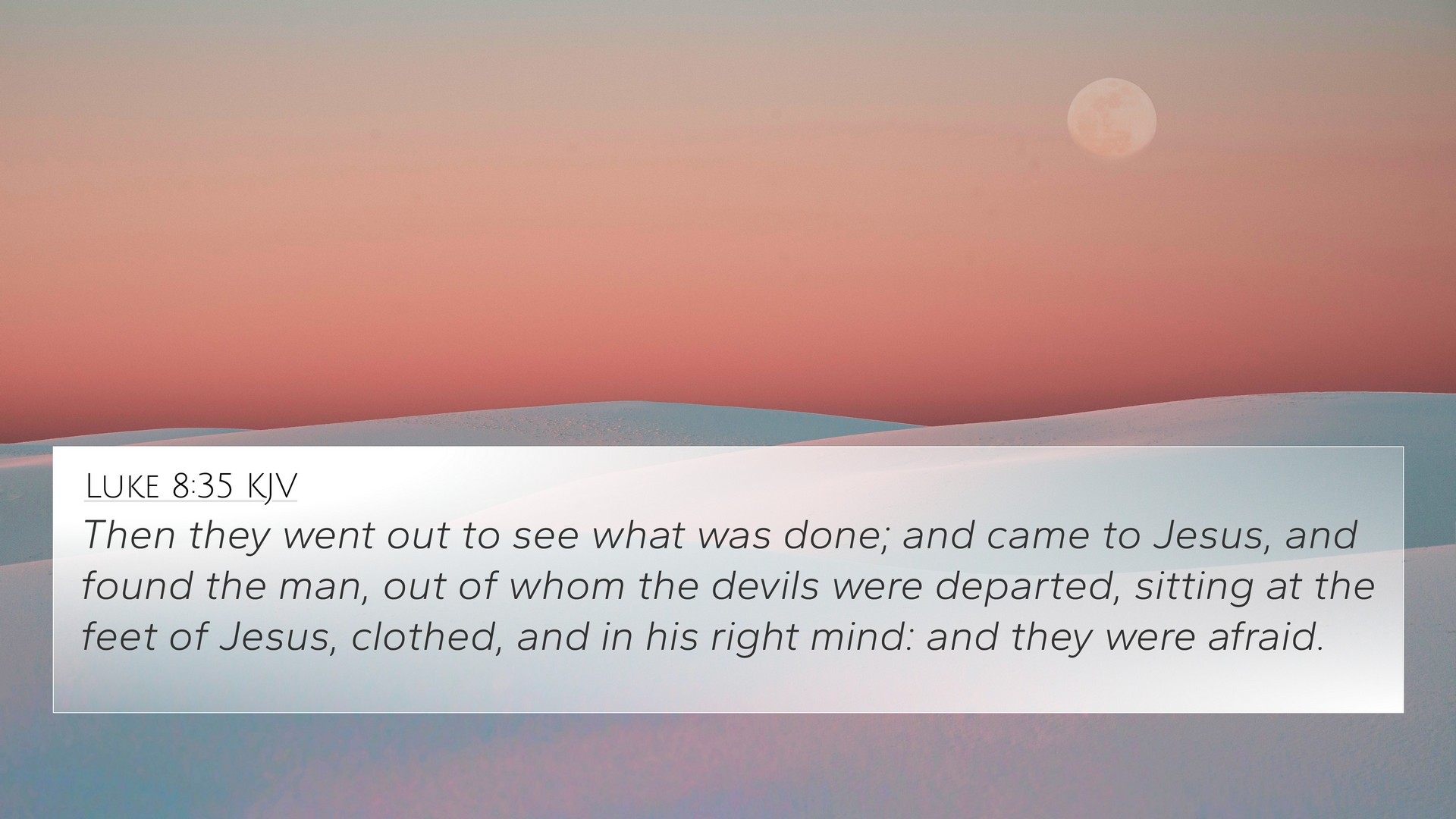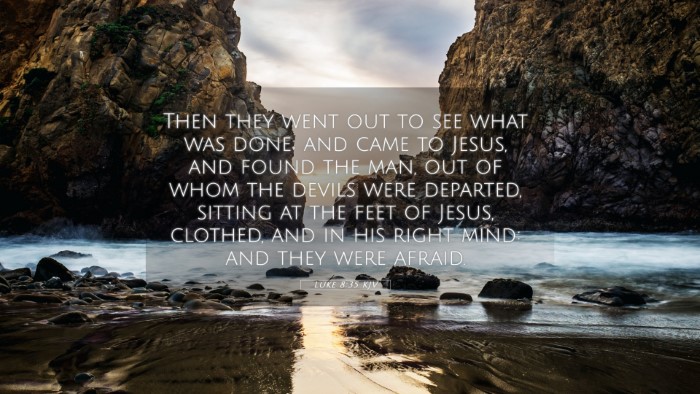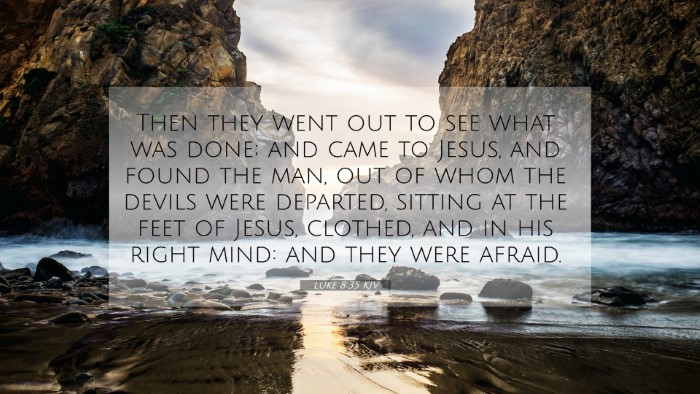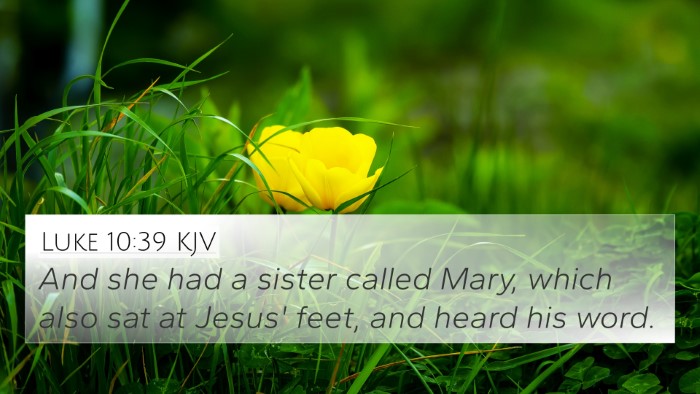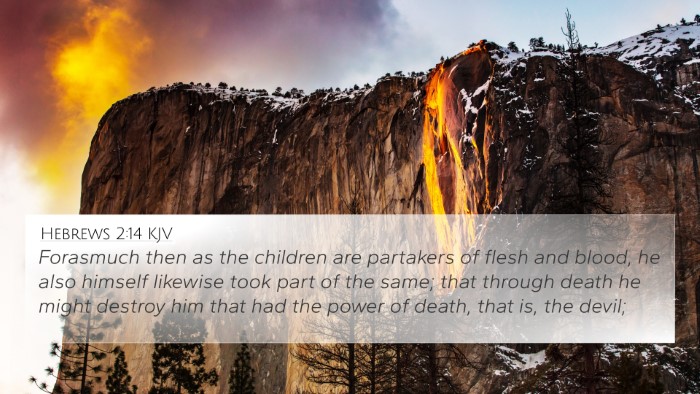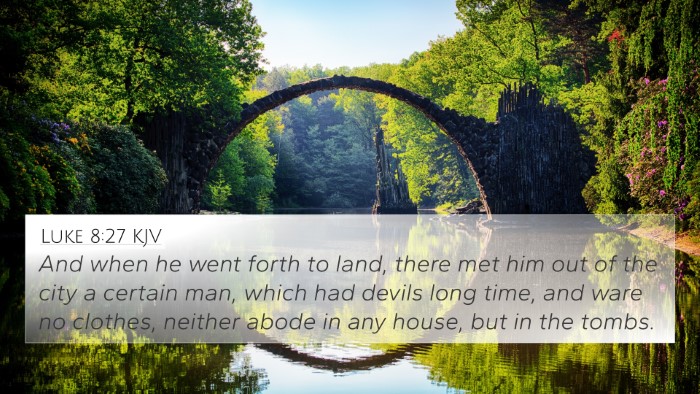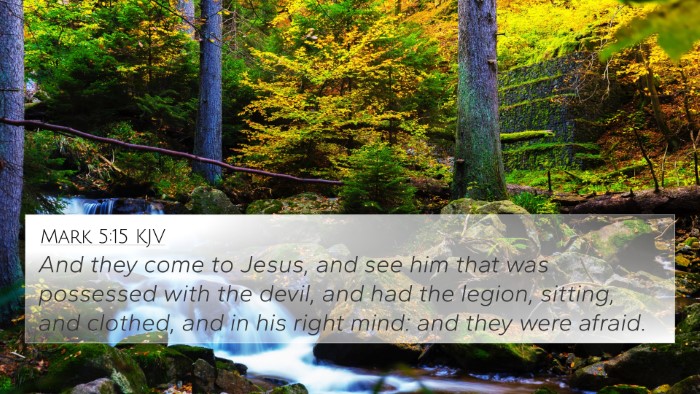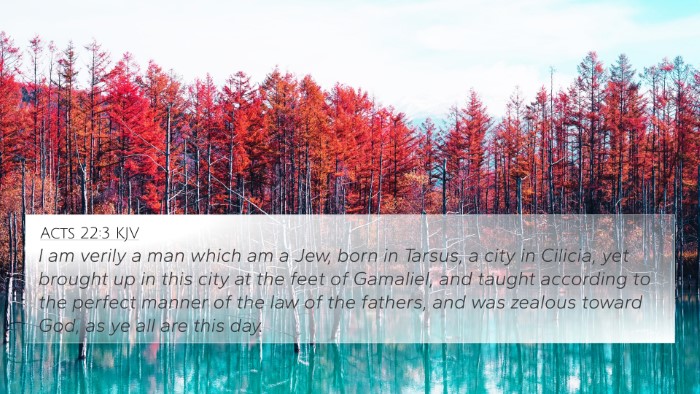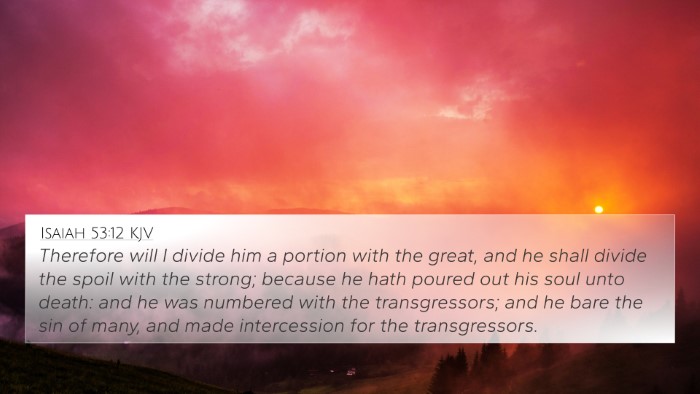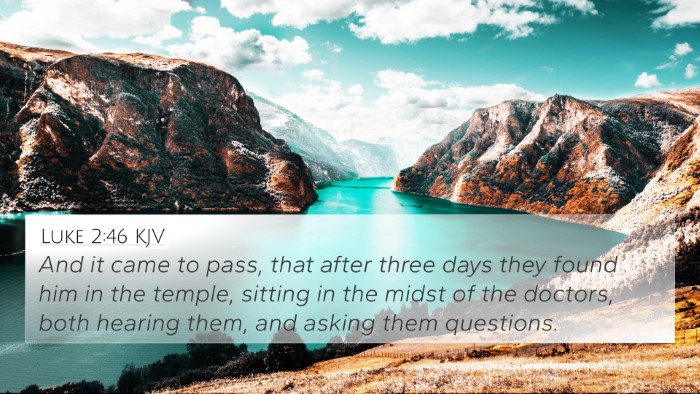Understanding Luke 8:35
Luke 8:35 reads: “Then they went out to see what had happened, and came to Jesus, and found the man from whom the demons had departed, sitting at the feet of Jesus, clothed and in his right mind. And they were afraid.” This verse portrays profound themes of restoration, the power of Jesus over evil, and the reactions of the people towards divine transformation.
Contextual Analysis
This verse follows the narrative of Jesus healing a demon-possessed man in the region of the Gerasenes. The previously afflicted man had been living among the tombs, tormented and violent, illustrating the devastating impact of demonic influence. The immediate transformation upon encountering Jesus highlights His authority and compassion.
Verse Breakdown
- “They went out to see what had happened”: This indicates a collective curiosity among the people regarding Jesus’ miraculous works.
- “Found the man from whom the demons had departed”: The healed man's presence shows the transformational impact of Jesus' intervention.
- “Sitting at the feet of Jesus”: This symbolizes reverence and submission, depicting the man's restored state.
- “Clothed and in his right mind”: These phrases emphasize both physical and mental restoration, contrasting his previous state of chaos.
- “They were afraid”: The people's fear can be interpreted as both awe and misunderstanding of Jesus’ power.
Theological Insights
Public domain commentaries offer valuable insights into this passage:
- Matthew Henry's Commentary: Henry emphasizes the transformative power of Christ, noting that the man’s change signifies not just physical healing, but also spiritual restoration. He reflects on how encountering Christ brings a peaceful state of mind.
- Albert Barnes' Notes: Barnes discusses the fear of the people, explaining that witnessing such power often leads to awe and confusion. He mentions that their reaction might stem from an inability to comprehend Jesus' divine authority.
- Adam Clarke's Commentary: Clarke notes the significance of the man being “clothed” which symbolizes dignity and restoration of social standing. He highlights that the man is no longer a terror but a testament to Jesus' mercy.
Cross-References for Deeper Understanding
To better understand Luke 8:35, here are some related Bible verses:
- Matthew 8:28-34: The account of Jesus healing the demon-possessed men, showing similar themes of restoration.
- Mark 5:15: Another perspective on the healing miracle, detailing the reaction of the people.
- John 10:10: This verse speaks to the purpose of Christ's coming – to give life abundantly, illustrating the contrast between chaos and the peace Jesus offers.
- Isaiah 61:1: Prophetic scripture that foretells the coming of the Messiah who would bring freedom and healing.
- 2 Corinthians 5:17: Discusses the transformation that occurs in a believer's life, relating to the newness of the healed man.
- Romans 12:2: A reminder of the renewal of the mind that parallels the man's restored mental state.
- Philippians 4:7: The peace of God that guards the heart, echoing the man’s experience of peace after healing.
- Revelation 21:4: The ultimate restoration that Christ brings, which reflects the healing and hope echoed in Luke 8:35.
- Colossians 3:5-10: The call to put off the old self and put on the new, resonating with the transformational aspect of this story.
- Luke 4:18: Jesus’ mission statement aligns with the healing and liberation presented in Luke 8:35.
Conclusion
Luke 8:35 encapsulates a powerful moment of healing and restoration through Jesus Christ. The verse not only illustrates the effects of divine intervention in an individual's life but also elicits a response from the community that reflects a common human reaction to the supernatural. Utilizing tools for cross-referencing Bible verses further enriches the understanding of this miraculous event.
